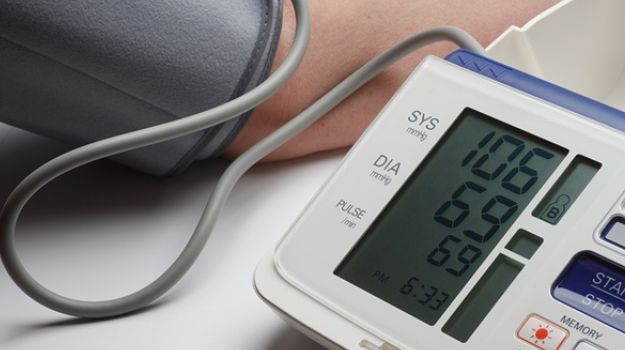Doctors are now increasingly advising their patients to not just rely on clinical readings but record fluctuations in blood pressure at regular intervals at home as well. Such readings can help ensure a more effective treatment procedure.

Doctors are now increasingly advising their patients to not just rely on clinical readings but record fluctuations in blood pressure at regular intervals at home as well. Such readings can help ensure a more effective treatment procedure and a better root cause analysis for the fluctuations, which in turn can help you keep your BP under control.
Keeping a record of BP readings of a person, recorded in a familiar setting and environment can also help in avoiding any discrepancy in readings due to external factors or anxiety.
Although till recent times, it was believed that the blood pressure readings taken by a doctor in a clinical setting is enough but recent studies point out that more than the high BP level, you must be wary of the range of fluctuations in BP. This can only be analyzed through 24-hour monitoring and constant checkups.
A BP level of 120/80 is considered normal and anything beyond that needs regular monitoring, and if consistently above normal, medical intervention. Our blood pressure is impacted by factors such as stress levels, nicotine content, emotions, pain, daily caffeine intake, salt intake, and physical activity or inactivity.
BP normally has a daily pattern and rises and falls naturally during the day depending on the physical activity and stress levels. It is generally the lowest at night when you sleep and rises steadily few hours prior to waking up, reaching its peak during midday. Post that, it again starts dropping slowly. An abnormal pressure rate needs to be monitored as it is generally linked to some underlying medical condition like kidney ailments, sleep-related disorders, diabetes, thyroid issues or cardiovascular ailments.
Benefits of regular monitoring of high blood pressure
- Regular monitoring enables early detection of hypertension and in taking medical intervention before it becomes more severe or causes other chronic ailments.
- It helps you in keeping a track of your treatment procedures and understanding whether a certain medication or therapy is effective or not.
- Frequent monitoring also ensures that your BP fluctuations are under control and helps you in cutting your healthcare costs by decreasing doctor visits.
Dr Udaya Kumar Maiya, Medical Director, Portea Medical suggests following points before checking your BP at home:
- Avoid caffeine, alcohol, tobacco, and exercise at least 30 minutes before measuring BP.
- Sit with your feet flat on the floor, rest your back against the chair, and place your arm on a table or other flat surface.
- Once you are at rest, wrap the cuff around the upper part of your bare arm. The center of the cuff should sit over the artery.
- With a manual monitor, one has to squeeze the bulb to inflate the cuff, and then deflate the cuff slowly. An automatic monitor can inflate by itself when at the press of a button.
- Check the top and bottom readings on the dial or display window. The top number is shows the systolic pressure-the blood pressure when your heart beats. The bottom number is the diastolic pressure-the pressure in between heartbeats. Write down your blood pressure number each time you measure it so you can track it over time.
Home BP monitoring is a very effective means of keeping BP fluctuations in check. However, it is important that the device you use is calibrated properly to give accurate results. It is also important to follow any guidelines mentioned for taking home readings in order to get the correct results.
(With inputs from ANI)
DoctorNDTV is the one stop site for all your health needs providing the most credible health information, health news and tips with expert advice on healthy living, diet plans, informative videos etc. You can get the most relevant and accurate info you need about health problems like diabetes, cancer, pregnancy, HIV and AIDS, weight loss and many other lifestyle diseases. We have a panel of over 350 experts who help us develop content by giving their valuable inputs and bringing to us the latest in the world of healthcare.














